11. CONVOCATION – Ashes Coalesce
Finland – Everlasting Spew Records
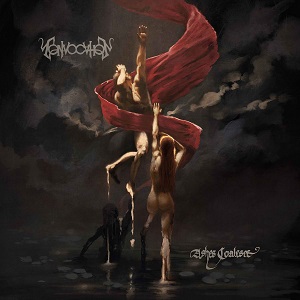
A fierce debate doom metal followers are commonly engaged in is whether polished production and meticulous song-writing make any sense in such a grim and miserable genre like funeral doom metal. While personally I find many recently-released funeral doom albums with an utterly clean sound a bit soulless, once in a while I run into unquestionably good albums that tilt the scale in the opposite direction. One of such albums is Ashes Coalesce, the sophomore LP from Finnish terrifying duo Convocation. Yep, Finland, world’s most important funeral doom metal manufacturers. Ashes Coalesce consists of 4 songs running for 45 minutes, the maths give you the typical song length in the genre. LL (Lauri Laaksonen) from Desolate Shrine wrote and played all the music in this album. Keeping things interesting at a constant slow tempo requires skills, but LL is able to materialize the gloomiest atmosphere by means of a rich exploration of slow riffs, death metal riffs (Desolate Shrine’s entity definitely dwelling here), melodic solos and clean guitars. The textures are helped by hair-raising keyboards pretty much in the vein of the Russian vanished band Abstract Spirit. MN (Marko Neuman), from ritualistic masters Dark Buddha Rising, has done an outstanding job on vocals. MN will vary from his predominant death metal growls to long screams and rather dark chants all over the album.
The misery and darkness in this album tastes similar to that brought by Faal and Finnish fellows Tyranny. However, it is the British doom metal institution Esoteric who first come in mind while listening to Ashes Coalesce. The reason is the similar alternation of guitar and vocal styles. Production-wise similarities are also unequivocal, but this is no surprise as Esoteric’s Greg Chandler himself did the mastering for this album. The result is simply one of the best funeral doom metal album of the year.
[bandcamp width=100% height=120 album=3803112195 size=large bgcol=ffffff linkcol=0687f5 tracklist=false artwork=small]
.
10. …AND OCEANS – Cosmic World Mother
Finland – Season of Mist
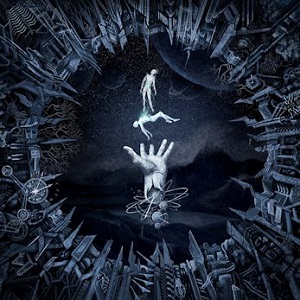
Who didn’t miss the 90s this year? Black metal was good, TV was good and mortal viruses were nothing but a topic for sci-fi movies. Nostalgia stroke Finnish veterans …And Oceans since last year, when they decided it was about time to record the first full-length album with their 90s teenager death metal band Festerday. Enjoying the taste of youth they got touring as Festerday, the band looked back and decided to record their first full-length as …And Oceans in 18 years. But Cosmic World Mother, the result of this studio confinement, is not only interesting because of the temporal aspect, but also because of the band’s evolution. …And Oceans dropped their last black metal album, The Symmetry of I, the Circle of O, in 1999. In their following two productions, A.M.G.O.D. (2001) and Cypher (2002), …And Oceans successfully explored the then-popular industrial metal genre. The band would then record another album under the moniker of Havoc-Unit. Personally, I never got into Havoc-Unit as I’m not really into this kind of industrial black metal, like ID:Vision and Aborym.
Their more recent obsession with synthesizers notwithstanding, …And Oceans have recorded an aggressive black metal album in Cosmic World Mother, and they have simply nailed it. This new album sounds as though it had been released in 2001 instead of A.M.G.O.D., right where The Circle of O ended. What you’ll get is fast drumming with purely black metallic riffs. Contrasting with Havoc-Unit (my apologies for the reckless comparison), drums are always played by a human, with no presence of synth bass typically exploited by The Berzerker and Aborym. In addition, all riffs are properly executed by tremolo picking, forgetting about the groove riffs in Havoc-Unit. Keyboards remain an important element of …And Oceans, but this is actually what has given the band their distinctive sound since their very first LP. Mostly symphonic, keyboards also explore a bit of industrial passages, very subtle and scarce ones though. The purpose of …And Oceans’ sound is to create a majestic atmosphere, rather than one of darkness or evil. I dare to compare this atmosphere to that aimed by Arcturus in their debut Aspera Hiems Symfonia (1996). The outcome is a rather fun album for which you’ll never touch the skip button!
[bandcamp width=100% height=120 album=4013448375 size=large bgcol=ffffff linkcol=0687f5 tracklist=false artwork=small]
.
9. VEIL OF SECRESTS – Dead Poetry
Norway – Crime Records
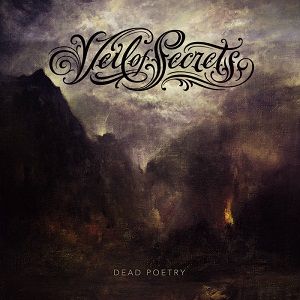
In 2007, Vibeke Stene parted ways with symphonic metal powerhouse Tristania. The band would simply go downhill ever since. With Theatre of Tragedy and Nightwish having been stroke by the departure of Liv Kristine and Tarja Turunen, respectively, Vibeke’s retirement from the metal music resonated in the memories of the genre’s followers. Vibeke’s followers stayed in tune, although updates were sporadic, to say the least. Being a huge fan of her voice, I still keep the cover art of Tristania’s World of Glass (2001) as my desktop background. Finally, in 2013, Vibeke announced she was joining a metal project, God of Atheist. Asgeir Mickelson, drummer for names the size of Borknagar, Ihsahn, Lunaris and Spiral Architect, led the project and showed off an insane line-up featuring Ihsahn himself and no other than ICS Vortex from Arcturus, Dimmu Borgir and Borknagar. Despite the enthusiasm the project kicked off with, God of Atheist never released a second of music.
Although nothing is quite a surprise in 2020, I was stunned when earlier this year Vibeke announced the almost immediate release of a full-length album by a 2-person project named Veil of Secrets. All music had been written and performed by Mickelson, therefore the project was supposed to unveil the secrets of the dusted God of Atheist mock-up. Although the line-up consisted of Vibeke and Mickelson alone, the violin was to be performed by Sareeta, from twisted black metallers Ram-Zet.
Fans shouldn’t expect Dead Poetry, Veil of Secrets’ debut, to sound any similar to Tristania’s heydays. This is not an ‘Beyond the Veil of Secrets’ type of word play. Veil of Secrets’ sound is much less symphonic than Tristania. All music is basically slow riffs accompanied by melodic and melancholic solos. Although the album is mostly played at downtempo, Mickelson shows off his guitar skills with a few complex progressive snippets. Obviously, Vibeke sounds impressive. One can get the goosebumps while listening to that gorgeous soprano voice finally back! However, I miss a bit her interaction with growls as Dead Poetry features only a few scarce growls that are clearly pulled down by the beautiful guitar solos and Vibeke’s unique voice. An overdose of nostalgia is what one gets when Sareeta’s violin plays along Vibeke’s voice, giving us a flashback of Pete Johansen appearing in every classic Tristania album.
Dead Poetry not only represents the return of one of the best soprano singers in metal history, but it also delivers a piece of top-rate doom metal, suitably spiced with progressive elements which make it fit in the picture of the current metal scene. A must-have not only for nostalgic fans of Vibeke Stene, but also for fans of more modern doom metal bands like Soliloquium, Counting Hours, Helevorn, Cold Insight, Majestic Downfall and (new) October Tide.
[bandcamp width=100% height=120 album=2140557771 size=large bgcol=ffffff linkcol=0687f5 tracklist=false artwork=small]
.
8. WINTERFYLLETH – The Reckoning Dawn
United kingdom – Candlelight Records
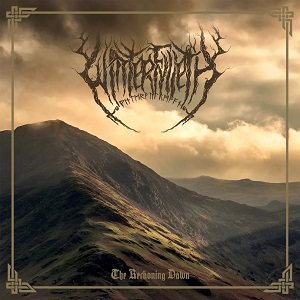
And the 2020 Tommy Iommi award for the best riff of the year goes to the main riff of ‘Absolved in Fire’, the third track of Winterfylleth’s last opus, The Reckoning Dawn. In fact, the seductive quality of this riff can be found throughout The Reckoning Dawn: Winterfylleth’s ability to write utterly aggressive yet charming and melodic riffs. After the recording of the entirely-acoustic LP The Hallowing of Heirdom (2018), the band’s permanent departure from their metallic sound was feared. Especially after looking at examples like Herefordshire’s Nhor or folk metal legends Empyrium. However, seeing Winterfylleth playing live in Inceneration Fest last year in a fully electric show was nothing short of a relief. The release of the Manchester quintet’s seventh full-length album and follow-up to their The Hallowing of Heirdom brought back the aggressive black metal sound while preserving the beauty and elegance of the folk guitars of their short stint in the fully acoustic world.
In The Reckoning Dawn, Winterfylleth show off their song-writing skills. Long tracks, normally running for longer than 7 minutes, explore both folkish sounds and tremolo picking riffs, turning into long tracks with unexpected twists and passages, while preserving the catchy melodies. And here is where Winterfylleth’s skills become evident: long tracks, no chance for skipping a single second. The old English folk feeling is helped by the occasional chants the band have exploited since previous releases. In general, Winterfylleth’s return to black metal is by no means a disappointing one. I truly consider the band has reached an apex in terms of song-writing in this album.
[bandcamp width=100% height=120 album=1531628267 size=large bgcol=ffffff linkcol=0687f5 tracklist=false artwork=small]
.
7. ATRAMENTUS – Stygian
Canada – 20 Buck Spin

“A carefully carved monolith” would be quite an accurate description for Atramentus’ debut album Stygian. Hailing from the cold and dark lands of Canada (unusual adjectives for the country, but this is a metal review), Atramentus started making their way into the realms of funeral doom metal this year. Being sponsored by prominent doom metal factory 20 Buck Spin, this LP was worth checking out even though I’m not quite into monolithic albums consisting of one or two monstrously long tracks, despite the fact that this is a rather common format in doom metal, my favourite kind of music. Stygian, indeed, offers two long tracks running for 16 and 23 minutes, plus an atmospheric interlude. But the feeling of beholding a single piece of heavy marble is not only brought by the album’s structure, but also by the monotonous drums that rarely change along the lengthy couple of songs. Drums are plain slow, played at a typical funeral march tempo. Although this might not sound too appealing, even for the genre’s followers, Atramentus‘ formula works because of the great work they have done on everything else in the album. Guitars, vocals and keyboards have been carefully written and performed to offer a grim foggy sound in which a constant downtempo drumming fits perfectly.
Although the atmosphere is clearly a funerary one, Atramentus not simply drag you inside the church for a funeral service. Stygian sometimes feels like an extreme metal version of German ambient jazz legends Bohren & der Club of Gore. The way keyboards have been put together gives that feeling of coldness and uncertainty. But once they’re integrated with the church organ, the result is simply astonishing. It’s also important to have a closer look at the detailed guitar work in this album. Guitar-wise, Atramentus are not the heaviest band you’ll find in the genre’s shelf. Rather than being designed to crush your ears and spirit, the slow doom metal riffs here seem to paint a background, while layers of melancholic solos play the main role. In this regard, I would like to bring Australian funeral masters Mournful Congregation in the equation. The tone and style of the soloing in this album is similar to that heard in Mournful Congregation’s signature melancholy. Atramentus also incorporate slow clean picking in the vein of Disembowelment and early Evoken to end up with a three-guitar formula in some sections of the album. I’m sure any fan of this genre will find this guitar work nothing short of eargasmic!
One thing that I really enjoy in Stygian is the ultra-deep growls that resemble those in Until Death Overtakes Me, a perfect fit considering the amount of ambient elements in this album. This guttural voice sometimes even evolve to chants. Vocals in general deliver, again, a detailed work, showing different stages that blend in perfect harmony with the gloom of the album.
From the previous discussion, any reader that is familiar with the genre will agree that this album ticks all the boxes of what one looks for in a funeral doom metal album. I would recommend this record particularly to people who are into ambient funeral doom, bands like Until Death Overtakes Me, The Mistress of the Dead and even Dusk Ov Shadows.
[bandcamp width=100% height=120 album=3601444655 size=large bgcol=ffffff linkcol=0687f5 tracklist=false artwork=small]
.
6. DESERTA – Black Aura My Sun
USA – Felte

It’s interesting how the shoegaze genre has evolved since its revival came about roughly a decade ago. While in most of cases bands seem to have leant towards the noise rock and psychedelic clusters, a few bands adopted a totally opposite direction resorting to the almighty 80s for inspiration. This is, however, by no means a surprise, since it was actually 11 years ago that M83 brought what is the unquestionable most successful album of this revival, Hurry Up, We Are Dreaming, which had a shameless 80s influence and a dreamy atmosphere that many would adopt ever since.
Right from the Californian scene comes Deserta, the newest offering in this branch of shoegazing sound. Deserta is a solo project from Matthew Doty, from post-rockers Saxon Shore. Being a solo project, Deserta gives total freedom to Doty for exploring and expressing as much as he wants. Black Aura My Sun is the debut album of this project. The albums shows a gorgeous ethereal atmosphere, created by ghosty echoed vocals, drum loops, layers of guitar effects, but also keyboards, tons of them! Keyboards sometimes resemble sheer synth-pop from the 80s. This is helped by drum loops which were an everyday thing in the 80s. Obviously, the Cocteau Twins come to mind while listening to this album. However, Deserta is a bit more atmospheric, the overall vibe is quiet, relaxing, dreamy and beautiful.
I normally like my shoegaze depressive and melancholic, but dare I say these are two tags that I wouldn’t put on a Deserta CD. I’d rather let the listener enjoy the blending of the layers of sound in this album, as well as its carefully but naturally written melodies. A soft caress to your ears!
[bandcamp width=100% height=120 album=2097670483 size=large bgcol=ffffff linkcol=0687f5 tracklist=false artwork=small]
.
5. COUNTING HOURS – The Will
Finland – The Vinyl Division
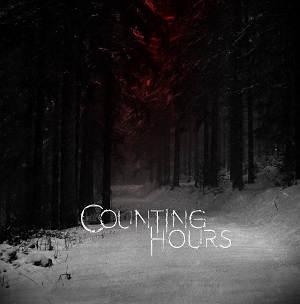
The legacy of Swedish masters of melancholy Katatonia is such that every year at least one Katatonia-inspired album makes my annual top 10. Nevertheless, this year I’m exceptionally exited about this album because the Katatonia mentees we’re dealing with are not average ones at all. Counting Hours, a project announced quite a while ago, 4 years or so, is very likely the project Tomi Ullgrén assembled to fulfill his Katatonia urge which was originally directed to his now-legendary band Rapture (the one from Finland, of course). Rapture simply vanished after their 2005 LP Silent Stage. However, Tomi Ullgrén remained far of absent from the stages as he’s part of funeral doom icons Shape of Despair. It’s no secret that Rapture‘s music was mainly written by Tomi Ullgrén. Rumours of him holding fresh Rapture demos circulated the Internet for a while. However, if any of these demos ever existed, I’m sure such blueprints ended up materializing in this album entitled The Will, Counting Hour‘s first LP.
To make Counting Hours even more striking, Tomi Ullgrén is joined here by Ilpo Paasela, from the incredibly underrated band The Chant. If you’re into Katatonia, Anathema and stuff like that and you’ve never heard of The Chant, I’m duty-bound to suggest you to listen to each of the utterly amazing albums in their catalogue. Counting Hours show some influence from The Chant, indeed. You’ll find a few of those very atmospheric passages with clean guitars, Pink Floyd high-pitch guitars and Ilpo Paasela’s charming and soft voice. Yet, the sound of Counting Hours is clearly mainly shaped by Katatonia‘s seminal albums Brave Murdar Day (1996) and Discouraged Ones (1998): repetitive midtempo drums, repetitive short riffs, interludes with clean guitars, and an overall melancholic vibe. Teachings from Paradise Lost‘s Greg Mackintosh can also be found in the the solos’ tone, although these ones can also resemble Katatonia‘s masterpiece Tonight’s Decision (1999).
While we’re more used to hear Ilpo Paasela’s clean vocals due to the more atmospheric character of The Chant, he does perform plenty of guttural vocals for Counting Hours. His growls are surprisingly good. He also performs a few of his screamed vocals which can normally be found in the climax of The Chant songs. In some cases the vocal arrangements are too similar to those in The Chant, which makes me feel like I’m listening to a heavier version of them or some sort of The Chant/Katatonia mash-up, which is by no means a downside!
Counting Hours have recorded a flawless album, in which, while keeping hold of their clear Katatonia influence, the Finns made a great song-writing and composition work. It’s true that The Will is an album that shouldn’t be missed by any Katatonia fan. But, in particular, it’s important to alert any Rapture fan out there about this record. The liner notes in the recent vinyl press of Rapture‘s Silent Stage by Alone Records close with singer Petri Eskelinen commenting «We have been in a chrysalis stage all this time, evolving. Here’s to the future!». Maybe I’m wrong and those Rapture demos are still getting dust in a shelf in Tomi Ullgrén’s…
[bandcamp width=100% height=120 album=1597670189 size=large bgcol=ffffff linkcol=0687f5 tracklist=false artwork=small]
.
4. SOULBURN – Noa’s D’ark
Netherlands – Century Media

Why do I like Soulburn’s new album so much? Because I love old Asphyx! The origins of Soulburn are a bit confusings. Originally started by Eric Daniels and other members of the classic line-up of Asphyx in 1996, the band would turn into Asphyx itself in 1999 while the alternative line-up of Asphyx had split up. As Asphyx, the band would release On the wings of inferno (2000) just to split up too shortly after. Eric Daniels would never return to Asphyx although the band was reactivated by singer Martin Van Drunen in 2007. Eric Daniels took Soulburn back to life in 2013, and this takes us to the pandemic of 2020, when both Asphyx and Soulburn managed to put out new music.
When Soulburn came back to life in 2013, the original idea was to write music inspired by Bathory, so Soulburn actually didn’t sound quite like old Asphyx, even considering that Eric Daniels wrote all of the classic Asphyx riffs. However, I must say that Soulburn’s new offering, Noa’s D’ark, sounds closer to old Asphyx than the band’s previous two albums. Noa’s D’ark sort of reaches the style of 1998’s Feeding on Angels, the band’s debut. This is quite a dynamic album with tempos that are typical in Daniels’s compositions. The recording quality is also closer to Feeding on Angels as, while the band turned their direction towards a more black metallic approach, a rawer sound was needed. The guitar tone is still rawer than the more thrashy tone that can be heard in old Asphyx. This is why I would like to turn the listener’s attention to the track ‘The Godless I’, where the riffs are more thrashy, taking us closer to the legendary Last One on Earth (1992). As far as vocals go, Twan van Geel delivers quite a distinctive performance, not too harsh screams that allow him to sing in a more melodic way than typical screamers. Listen to ‘Assailed by Cosmic Lightning’ for a clear example.
A welcome surprise is the intervention by current and classic Asphyx singer Martin van Drunen in ‘Anointed – Blessed – and Born for Burning’, a slow, doomy and thrashy track. In fact, this 2020 we also received the good news that not only Eric Daniels, but also Bob Bagchus, founding drummer of Asphyx, joined Martin van Drunen in Grand Supreme Blood Court. We hope to hear new tunes from the court soon!
.
3. LIVE BURIAL – Unending Futility
United Kingdom – Transcending Obscurity Records
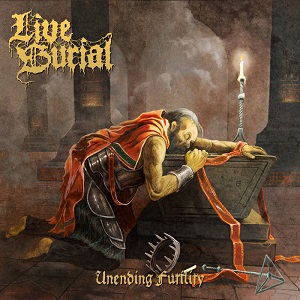
“Old school death metal” has become almost a separate type of music which moves away from the machine-like sound of modern death metal. Accordingly, old school death metal seems to have its own, already growing, scene. This year, apart from having received quite impressive new albums from veterans Incantation and Benediction, we also got new purely old school death metal releases from other lesser known names like Newcastle’s Live Burial. Live Burial, however, are not quite an old band, they just dropped their sophomore album this year. Nevertheless, the band has already gained a good position in the underground scene. And being signed by such an alluring label like Transcending Obscurity has definitely put them in a good position.
Unending Futility, Live Burial’s second full-length, is incredibly well-written. Mistakenly labelled in Metal-Archives as “death/doom metal” and “death/thrash metal” for a while, what actually Live Burial deliver is tremolo-picked riffs aplenty. Basically the entire sound of Unending Futility is driven by these amazing riffs, which is something I’m sure any fan of the genre will appreciate. The way the songs have been written allows them to evolve dynamically, varying tempos from utterly dark slow passages to fast blast beats. This is, of course, something that will remind you of Incantation, who seem to be fascinated with the mix of downtempo sections and aggressive speed. Vocals are yet another element that makes this album tick all the boxes. Not quite growls, vocals are rather screamed with a little echo. Echo making vocals sound sort of distant was exploited in the late 80s, before Suffocation’s Frank Mullen and Cannibal Corpse’s Chris Barnes made growls in death metal deeper and more brutal. Personally, I would like to compare vocals in this album to those of Daniel Corchado from The Chasm.
Live Burial have crafted not only a must-have for any old-school death metal fan but also a comforting sign that the scene is in good health and that flawless albums in the genre are still being produced. Other important 2020 releases from young old-school death metal bands include the debut albums by Portland’s Disembowel and Athens’s Plague, as well as the new album from the traditional Swedish riff-worshipers Revolting. The latter being around for roughly ten years though.
[bandcamp width=100% height=120 album=4294868934 size=large bgcol=ffffff linkcol=0687f5 tracklist=false artwork=small]
.
2. CELESTIAL SEASON – The Secret Teachings
Netherlands – Burning World Records
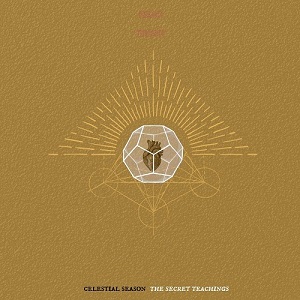
Celestial Season’s comeback album is not only one-of-a-kind because of its musical brilliance, but also because whoever first came up with this idea was able to recruit the incredible number of six members from the line-ups of the band’s two classic albums, Forever Scarlet Passion (1993) and Solar Lovers (1995). Originally having announced their return in 2011 after a 10-year hiatus, Celestial Season re-recorded ‘Decamerone’, a classic off their Solar Lovers with a different line-up that didn’t include original singer Stefan Ruiters. Although I never quite saw the point of this re-recording, specially because of the awkwardness of hearing such a classic with Ruiters distinctive growls being replaced, I was really keen of hearing future material from the band. Nevertheless, Celestial Season basically vanished once again when updates stopped coming for years. Finally, this year, Celestial Season not only announced they were being joined by Stefan Ruiters and founding bassist Lucas van Slegtenhorst, but also put a date to the release of an entirely new album.
Although with such a line-up it was clear that Celestial Season had no intentions of putting out more stoner rock music, the question of the extent to which the band would stick to their classic sound was in the minds of all fans. After Solar Lovers, Celestial Season’s ever-changing line-up moved their sound towards a more stoner rock direction, releasing a triplet of successful albums that would put the band in the map of the Kyuss-pioneered genre. It is important to bear in mind though, that Celestial Season had stoner rock influences since their debut album Forever Scarlet Passion. It was actually these spicy stoner and psychedelic elements that made Celestial Season sound so different to Peaceville’s Big Three.
Considering that Celestial Season’s last death/doom metal album was released 25 years ago, The Secret Teachings, their grand comeback, is quite consistent with their classic sound and shows no trace of the band’s later period. The Secret Teachings is slow, really slow, probably even slower than both Solar Lovers and Scarlet Passion. This new album tastes rawer. I appreciate the fact that production here is a bit more round around the edges than in the re-recording of ‘Decameron’. But it’s not only the recording quality what gives this raw feeling, drums add minimalism by being repetitive even for doom metal standards. Drummer Jason Köhnen, currently a respected electronic breakcore musician under the moniker of Bong-Ra, sounds tired behind the drumkit. This, instead of being a downside, helps to create an atmosphere of hopelessness. Meanwhile, the violin, a key element in the band’s style, sounds pretty much unchanged from the bands early recordings. However, now it’s joined by a gorgeous cello that gives a new element in the picture. Another change is the lack of spoken words which used to be a preamble to Ruiter’s deep growls. The psychogenic elements can be heard in ‘They Saw It Coming from the Sky’ where fuzz guitars are mixed with heavy riffs and in ‘Long Forlorn Tears’ with an up-tempo section where the classic cha-cha bell appears in the scene. The guitar work is indeed awesome, spanning from omnipresent doom riffs to fuzz, Pink Floyd style solos (‘A Veil of Silence’), post-rock feedback (‘Lunar Child’) and beautiful acoustic guitars (‘Beneath the Temple Mount’ and ‘Dolores’).
Comeback albums are normally not this good. Sometimes bands try way too hard to come back to their roots. This is not the case in The Secret Teachings. Celestial Season sound genuine, raw, unique. This line-up in particular, being a mix of members from the band’s two greatest albums, has crafted a masterpiece of seminal doom metal that is definitively a worthy follow-up to Solar Lovers.
[bandcamp width=100% height=120 album=925250305 size=large bgcol=ffffff linkcol=0687f5 tracklist=false artwork=small]
.
1. DAWN OF SOLACE – Waves
Finland – Noble Demon

Come think of it, it’s been 7 years since Tuomas Saukkonen decided to put to an end all of his then-existing projects: Black Sun Aeon, The Final Harvest, RoutaSielu, Dawn of Solace and, sadly, his until then most successful band Before the Dawn. Saukkonen’s creativity was to be channeled towards a single project, the folk metal band Wolfheart. This smart move eventually ended up kicking his career up a notch. After having put Wolfheart’s name in a plethora of important festivals and having amassed a substantial amount of fans with four successful Wolfheart LPs, Tuomas Saukkonen decided it was about time to visit the bands cemetery to try to reanimate one of his deceased projects. The chosen one was Dawn of Solace, a melodic death/doom metal band. Originally, Dawn of Solace consisted of only Tuomas playing all instruments and performing harsh vocals, while clean vocals were added by then-Before the Dawn clean singer and bassist Eikind. However, in this reincarnation of Dawn of Solace, Mikko Heikkilä, from the defunct gothic metal outfit Sinamore, took over the vocal duties. Although it’s natural for me to think of Eikind as the corresponding singer for Tuomas’ signature melodic solos, I have to confess I’m a huge fan of Mikko’s dramatic voice. The Mikko-Tuomas formula is not new though. The musicians teamed up before in Black Sun Aeon with jaw-dropping results.
Waves, Dawn of Solace’s new album, brings back the non-folky melancholic solos that I missed so much whenever I listened to Wolfheart. Tuomas’ style remains intact in Waves. Solos like the ones in ‘Numb’ will remind you to the heydays of Before the Dawn. It’s not only the melody, but also that characteristic tone, that make the guitar solos in Waves so nostalgic. This is a fully guitar-led album, in which every riff, solo and pick in clean sound, is delightful. As such, keyboards remain a subtle background element, simple extra strokes. Mikko Heikkilä doesn’t hesitate in expressing his darkest feelings through his rather negative lyrics. His performance is an elegant one, with vocal arrangements that fit perfectly in Tuomas’ compositions. This constant collaboration leads to catchy tracks, whose structure not necessary draws on chorus repetition to stick to the listener’s mind. Unlike Dawn of Solace’s previous material, Tuomas stays away from the microphone most of the time. He can only be heard in a few screams in ‘Tuli’, a track with fully-Finnish lyrics. A welcome addition and quite a surprising moment is the intervention by Eikind in ‘Choice’. Finally, closing track ‘Ghost’ is a beautiful voice and piano song, a highly emotional part of the album and probably the song that will remind me to 2020’s lockdown the most.
If a comparison against Dawn of Solace‘s only pre-Covid release, 2006’s The Darkness, is to be made, I must say that Waves follows a less repetitive pattern. The melodies and compositions are, in general, more appealing and dynamic in this 2020 reincarnation. Has Tuomas been collecting solos and riffs during his former projects’ hiatus and now he simply recorded the very best ones? I must say I don’t even miss the more recurrent interaction between growls and clean vocals that one could hear in The Darkness. Mikko’s performance in Waves is so hypnotizing that seldom does he leave any room for thinking about growls.
One of the aspects that I quite appreciate in this album is the fact that both musicians involved in it have such a characteristic style that if one listens to it without knowing what band is playing, one can guess to a reasonable degree of certainty that the music has been written and performed by Tuomas Saukkonen and vocals were sang by Mikko Heikkilä. This type of musicians identification is something one can’t normally do so easily in the vast majority of underground metal albums.
[bandcamp width=100% height=120 album=347577528 size=large bgcol=ffffff linkcol=0687f5 tracklist=false artwork=small]
.
– PABLO CUSTODIO
.





